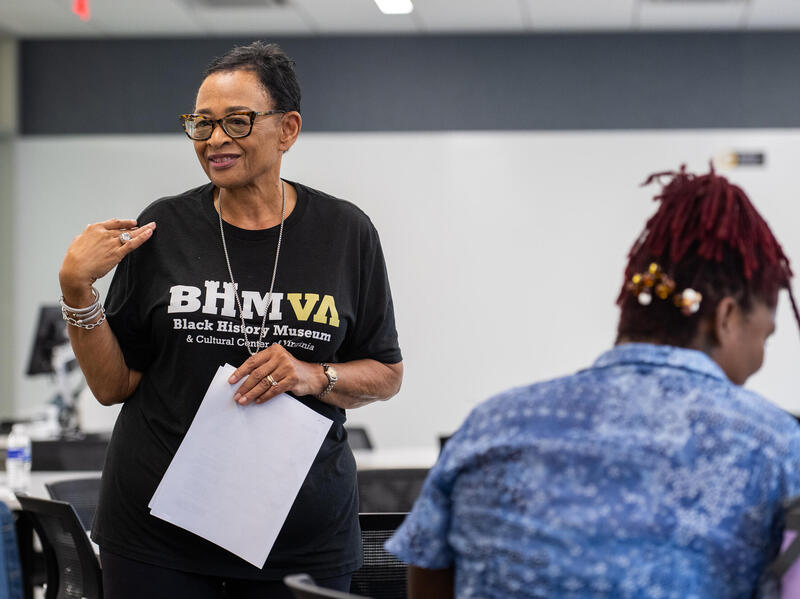
Aug. 7, 2020
Returning to campus in the age of COVID-19
As colleges and universities nationwide prepare for the fall semester — in person, online and in a hybrid of both — VCU experts detail ways to maximize safety.
Share this story
As colleges and universities across the country prepare for a fall semester unlike any other, the benefits of reopening may outweigh the risks of COVID-19 — if the proper health and safety procedures and guidelines are put into place and enforced.
The virtual platform that most colleges and universities adopted after the pandemic hit could pose disproportionate challenges for “individuals in low socioeconomic households,” said Rebecca Vokes, associate administrator for the divisions of endocrinology, nephrology and infectious diseases at VCU Health System.
“They may not have proper devices or access to broadband internet for virtual classes,” Vokes said. “Foregoing in-person classes may result in students not getting the education they deserve.”
A school also could be a main resource for students who might lack food or housing. “For those students, reopening might be a vital link to these services,” Vokes said.
Health and safety first
Classes at Virginia Commonwealth University begin Aug. 17 and will include in-person, partial in-person and online-only instruction. The fall semester will conclude Nov. 24 and final exams will be conducted remotely after the Thanksgiving holiday. Across the country, some universities and colleges are taking a similar approach, opening this fall with a combination of in-person and online classes; others have chosen to delay their re-openings or move classes entirely online for the semester.
In making decisions over how to reopen, schools have to consider their own campus community as well as the community-at-large as it relates to stable or decreasing rates of COVID-19, said hospital epidemiologist Gonzalo Bearman, M.D., a professor of medicine and division chair of infectious diseases at VCU. Reopening should also be based on the school’s ability to implement a comprehensive plan with everything from testing to the deployment of personal protective equipment, he said.
When schools do reopen, health and safety need to be the priority, Vokes said. The same basic guidelines that apply to the public are also valid in a school setting — social distancing, hand washing and face masks. People who are high risk should have options for remote work and study.
Students, staff or faculty who exhibit COVID-19 symptoms must be tested immediately and start a 14-day isolation routine, Vokes said. Contact tracing to determine if any other students, faculty or staff have been in contact with the individual should be started as soon as possible.
“You want to have sites for testing that are open and convenient during hours students can go,” Vokes said. “You have to think about how much medical staff and personal protective equipment you have.”
Academic medical centers such as VCU Health can help fellow universities with the availability and processes for testing, Vokes said. “We are currently partnering to support COVID testing at William & Mary,” she said.
When students are in school, face mask use must be universal except when eating and drinking, Vokes said. There also should be standardized processes for disinfection of common areas and high-touch surfaces. Hand hygiene stations and hand sanitizers should be readily available.
Letting experts drive policies
Vokes and Bearman stressed that school policies should be driven by the expertise of clinicians and epidemiologists and reflect human-factors engineering, a practice that uses environmental cues such as signage, colors and images to elicit a desired response such as proper hand washing and social distancing.
In addition, leaders, administrators and professors need to model appropriate health and safety behaviors and enforce the rules, Vokes said.
“One of the things people don’t know is what their role is in asking people to wear masks,” Vokes said. “Wearing masks is safer than not wearing masks, but who enforces that? Do you have a policy? How would it be enforced? Where are places designated that you can take your mask off safely?”
Administrators, faculty and staff have to be “empowered to enforce rules and not be punished for denying someone service or access because they are not wearing a mask,” Vokes said.
Colleges and universities can minimize activity on campus later this year by modifying the academic calendar to move to virtual classes after the Thanksgiving break. This can minimize travel and curb introduction of the virus to the campus community.
Dormitories, particularly with shared rooms and common areas, should be properly cleaned, using precise guidelines, Vokes said. Students should be given written instructions as well as supplies for disinfecting high-touch areas within a dorm room.
Reopening will take a lot of resources and manpower, Vokes said. And while no reopening can be guaranteed completely safe, there are ways to reopen safely, Bearman said.
“The regional rates of infection, including rates of positive COVID-19 tests, could aid in reopening in the event of a downward trend,” Bearman said. “[It also] could reverse university reopening if increased community transmission is observed.”
Subscribe to VCU News
Subscribe to VCU News at newsletter.vcu.edu and receive a selection of stories, videos, photos, news clips and event listings in your inbox.









